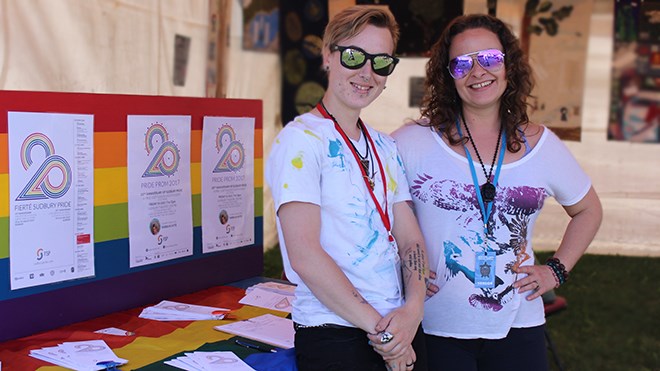Since a group of Black Lives Matter protestors staged a sit-in during the 2016 Toronto Pride Parade, a lot of attention has been focused on the historic relationship between police and the queer community.
In many such communities, that history has not been pretty. Take the 1969 Stonewall riots in New York, the 1977 bathhouse raids in Montreal, and the 1981 bathhouse raids in Toronto as examples.
Those incidents led to a deep mistrust of the police within LGBTQ+ community that, especially for more marginalized members (people of colour, transgendered), still persists today.
In 2017, with Toronto Pride under new leadership, organizers made a controversial decision to bar uniformed Toronto Police Service officers from Pride events — most notably, the famous parade.
Toronto Mayor John Tory expressed disappointment at the decision, saying “Any time anybody is excluded, it can't be a good thing,” and a motion at city council attempted to rescind Toronto Pride's municipal grant funding, but was defeated.
Here in Greater Sudbury, the relationship between the queer community and its police force doesn't carry the same kind of baggage.
Fierté Sudbury Pride (FSP) organizers acknowledge they have a "wonderful" relationship with the Greater Sudbury Police Service, and say the force is “at the forefront” of LGBTQ+ issues when it comes to policing.
But there are still marginalized members of the local community who are uncomfortable at the presence of police officers at Pride events and there are many anecdotal incidents of prejudice towards the community from police.
Organizers say they have found a compromise at the suggestion of Chief Paul Pedersen: during this year's Pride Week celebrations, police will be welcome to participate in events but not in full uniform.
Instead, they'll be dressed casually in GSPS t-shirts and will leave their utility belt — and gun — out of the ensemble.
Pedersen says it's “fantastic” that police have been invited to participate in Pride events and acknowledges that some members of the LGBTQ+ community see the police uniform as a symbol of oppression.
“There are forces that are trying to drive a wedge between the police and the LGBTQ+ community and that's not happening here,” he says. “We have to remember that we're invited guests to this parade. We're going to respect their wishes and make sure to continue building trust in this community.”
FSP acting chairperson Kelly Perras says it's even more important for organizers to address the concerns of the marginalized members of its community because, unlike Toronto, they exist in such small numbers.
“Sudbury is a very different place from Toronto,” she says. “We have such a very small group of more marginalized people within the LBTQ community — within our Indigenous community, our people of colour, our differently abled community — these are people whose voices are often not heard.
“When we're in a community like this, we absolutely must, as a Pride organization, listen to the most marginalized among us.”
Perras says it's those members of the larger queer community who have come to the table expressing their discomfort at seeing uniformed police officers at Pride events.
She says that immediately following the controversy at last year's Toronto Pride Week, Pedersen met with then FSP chair Katherine Smith and asked point-blank if the committee would prefer that GSPS not take part, or at least not wear uniforms or deliver speeches.
“This was the chief's way of showing his kindness, his compassion, his love for our community,” Perras says. “He knows it doesn't diminish the power of the police to not be in uniform, to not have their gear. What it does is show kindness and compassion to those who are triggered, who do have historical trauma.”
At that time, organizers decided not to take any such action and the status quo was maintained.
Perras says the committee expected fallout from that decision and they got it.
“This is a highly polarizing issue with about 50 different facets,” she says. “Everybody has their opinion and that opinion is valid.”
A year later, while seeing the same debate play out in cities across North America — especially in Toronto — and speaking again with both the police and members of the queer community locally, it was decided “with 100-per-cent agreement from the police,” that uniforms and gear would not be welcome in this year's parade, Perras says.
“They'll be identifiable as police — they won't just be in civilian clothing, they'll absolutely be representing the solidarity that the police force in Sudbury has with the community,” she says. “They just will not be in full regalia.”
Perras acknowledges that no side of the argument will be completely satisfied with this decision, but says that it addresses as many sides as possible and is a compromise on all fronts.
“At the very least, we've reached a middle road,” she says. “We're demonstrating that Pride and the police are working together with a lot of compromise, compassion and communication. And we're very proud of that.”
Of course, the police officers who will be providing standard security at Pride events will appear in full uniform in order to ensure the safety of participants.
Despite not being permitted to wear their uniforms freely, Pedersen expects, like most years, a handful of off-duty GSPS officers will still participate in the Pride March this Saturday.
“They will be there again this year,” he says.
